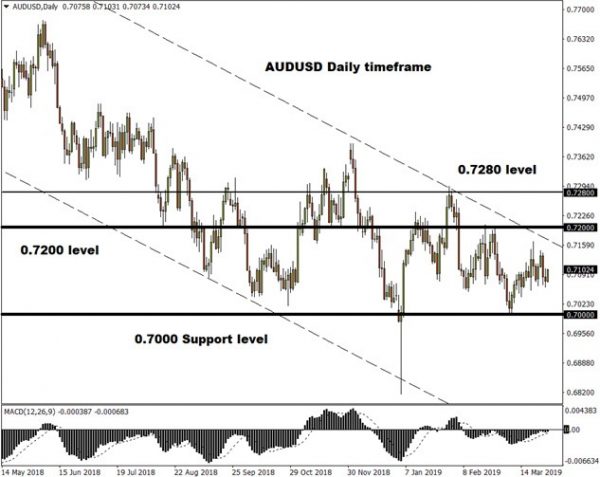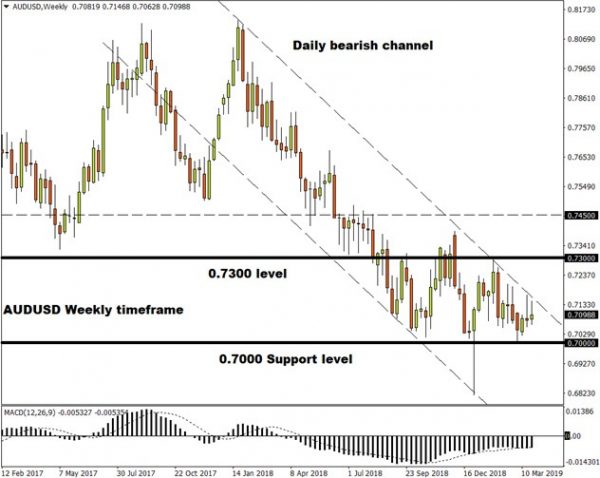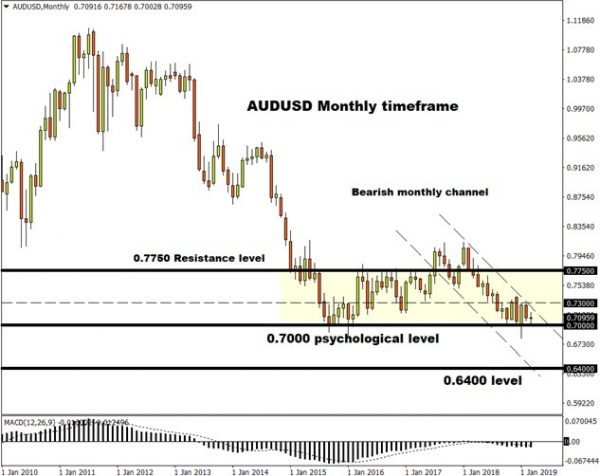It’s going to be a busy second quarter for the Australian Dollar.
April kicks off with the budget announcement, which should pave the way for Australia’s federal elections in May. This adds another layer of domestic risk to the Aussie’s outlook, with policy continuity being a major talking point for domestic and foreign investors. AUDUSD has gained by more than 0.5 percent in the first three months of 2019, and the near-term outlook on what is next for the Australian Dollar should become clearer once the elections are over.
Macroeconomic conditions paint a confusing picture
In the meantime, the domestic outlook remains compounded by puzzling economic indicators.
The Reserve Bank of Australia (RBA) paints a hopeful picture of steady growth, with a 2.8 percent increase across 2019 and 2020. However, consumer sentiment has been dampened by falling house prices, while business sentiment has also been in a broad decline.
In contrast, the jobs market is proving to be robust, where unemployment has fallen to an eight-year low. Yet, wage growth has been flat, coupled with weak household spending, which means that domestic consumption isn’t firing on all cylinders.
Such juxtapositions likely warrant the RBA leaving the benchmark interest rate untouched through Q2, having been kept at a record-low of 1.5 percent since mid-2016. However, the RBA might strike a downbeat tone and hint that an interest rate cut will be warranted, should downside offshore risks become more pronounced.
External factors will influence the Australian Dollar
Looking at the external front, the second quarter of 2019 is expected to bring about the long-awaited US-China trade deal, which may present something of a double-edged sword for Australia. A concrete trade agreement, one that lifts US tariffs on Chinese imports, could boost AUD along with other Asian currencies as risk-on sentiment gets a shot in the arm. However, a trade deal that forces China to import more from America could erode Australian shipments and is likely to be negative for the domestic economy.
It must also be kept in mind that, among all developed economies, Australia is the most dependent on China. With the Australian Dollar serving as a proxy to the Chinese economy, a steeper slowdown in the world’s second largest economy is expected to feed negatively into AUD.
What role will China play in Australia’s outlook?
We note that Beijing has already announced stimulus measures to boost domestic consumption, but it will take time before the proposed tax cuts and boosted lending arereflected in China’s economic data. Such hopes are perhaps best kept for the second half of 2019. Hence, for the April-June period, expect AUD traders to continue biting the bullet in the likelihood of continued external market risks, until China shows material signs of stabilizing growth, which would in turn be supportive of the Aussie.
Will 0.700 prove to be a reliable support?
Looking at the technical picture, the Australian Dollar’s bearish trend in 2018 appears to have flattened out in the first quarter of the year, finding support at the psychologically-important 0.70 mark. However, given the confluence of external and domestic risks highlighted above, AUDUSD may struggle to find near-term catalysts for more upside to materialize.
Resistance may arrive at its 200-day simple moving average of 0.72, with stronger resistance at its near 0.73 year-to-date high.

















